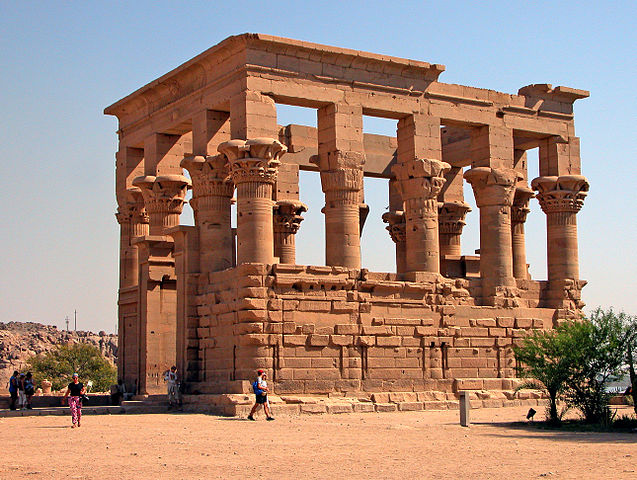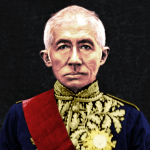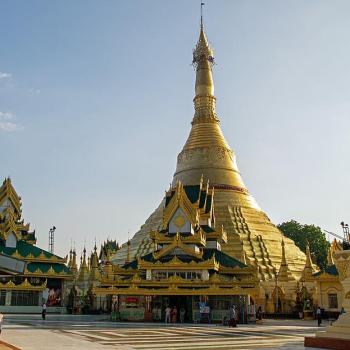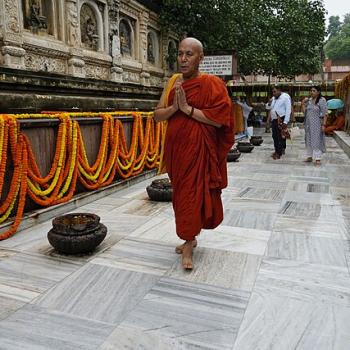Buddhism in Egypt? Nearly two millennia ago? Maybe. A statue of the Buddha dating to between 90 and 140 CE was recently discovered in Berenike, an ancient city on the western coast of the Red Sea in Egypt. It is the first ancient Buddha found west of Afghanistan. The 28-inch-tall (71 centimeters) statue is of a standing Buddha and was carved from Mediterranean marble.
The statue somehow arrived in Berenike while Egypt was controlled by the Roman Empire. To recap: Egypt was conquered by Rome in the Battle of Alexandria in 30 BCE. That was when Octavian (64 BCE-14 CE) famously defeated the doomed lovers Mark Antony and Cleopatra. That battle ended the long rule of the pharaohs of Egypt. Strictly speaking, this also was the last major battle of the Roman Republic. Just three years later, in 27 BCE, Octavian renamed himself Caesar Augustus, and the Roman Empire officially began.

About Berenike
Berenike was founded on the western shore of the Red Sea in about in the 3rd century BCE. After Egypt was absorbed into the Roman Empire it became a major port city. Then it was abandoned in the 6th century and slowly buried under desert sands. It was rediscovered in 1818 by the Italian explorer Giovanni Belzoni. The current excavations of the site began in 1994. Today the site is being explored by teams of American and Polish researchers, working together. Slowly, layer by layer, the story of ancient Berenike — a multicultural city and a major trading hub of the Roman Empire — has come to light.
How could a community on the Red Sea become a trading hub centuries before the Suez Canal connected the Mediterranean Sea to the Red Sea? It’s believed goods from the Mediterranean Sea were shipped south on the Nile. Yes, the Nile flows north, but Egyptians from even more ancient times were able to move barges both north and south on the Nile. Then the goods were hauled across Egypt’s Eastern Desert from the Nile to the Red Sea. The goods then were loaded onto ships that sailed south on the Red Sea and into the Indian Ocean, with the aid of monsoon winds. From there merchandise could go to India, southern Arabia, or coastal Africa. When the monsoon winds reversed the ships returned to Egypt with goods from India, Arabia, and Africa. And from there merchandise was shipped to markets all over the Mediterranean. And we know now that much of this commerce flowed through Berenike.
The Buddha of Berenike
Archeologists believe the marble Buddha of Berenike was made in Egypt in the 1st or 2nd century CE. But what does it tell us about Buddhism in Egypt?
The most likely explanation for the statue’s presence in Berenike was that commerce had brought some Buddhists from India to live there. And perhaps one among them was a skilled sculptor who acquired the Mediterranean marble. However, it’s also the case that the Buddha of Berenike appears to copy the style of Buddhas being carved in central Asia at the time, in what is now Afghanistan and Pakistan. This is an area often referred to as “Gandhara,” although strictly speaking ancient Gandhara was a place mostly located in what is now the Swat Valley of Pakistan. In the first and second century CE, when the Buddha of Berenike was sculpted, this area of central Asia also was the Kushan Empire. The Kushan Empire was an important trading hub of the ancient world, and Buddhism was the dominant religion there.
With the caveat that I am not an art historian: it’s my understanding that the halo or “sun disk” that surrounds the Buddha of Berenike’s head was a feature artists of the Kushan Empire copied from the Zoroastrian art of Persia. I don’t know if halos had spread to the rest of Buddhist Asia that early. And the flowing drape of the Buddha’s robe was taken from classic Greek and Roman art. It seems unlikely to me that a south Asian artist of the time would have carved that Buddha the way it was carved.
The Silk Road connecting Rome to China went right through the Kushan Empire. Perhaps a Buddha from the Kushans somehow made its way to Egypt via the Roman-Mediterranean trade. But the Buddhas of the Kushan Empire at the time were sculpted from green phyllite and gray-blue mica schist, not Mediterranean marble. So the origins of the Buddha of Berenike remain a mystery for now.
Buddhism in Egypt: An Alternate Explanation
There is a less likely but not absolutely impossible explanation for the presence of Buddhists in 1st century CE Egypt. The Emperor Ashoka reigned the Mauryan Empire of India from about 268 to 232 BCE. Ashoka was a devout Buddhist. He left us inscriptions saying he had sent Buddhist missionaries to all the countries of the world he knew of, including Egypt. And so perhaps a small community of Buddhists lived in Egypt from Ashoka’s time. No other record of this mission to Egypt survives, however. Ashoka’s missionaries did establish Buddhism in central Asia, which was part of his empire, as well as in Sri Lanka.













